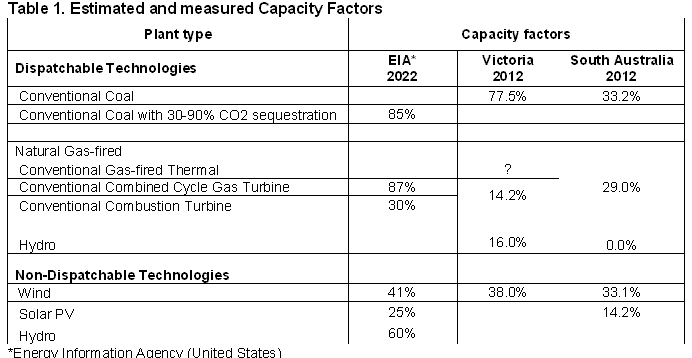The claim that there is an opportunity for coal burning power stations depends on the extent of renewable energy sources.
The Blueprint target of 42% renewables destroys the opportunity to build baseload coal burning power stations independent of the choice of technologies.
This is because the Blueprint analysis uses the levelised cost of electricity (LCOE). LCOE is the net present value of the unit-cost of electricity over the lifetime of a generating plant using a particular technology. It is often taken as a proxy for the average price that the plant must receive in a market to break even over its lifetime.
Advertisement
A key factor in calculating the levelised costs is the utilisation of the plant expressed as the capacity factor. Levelised costs are referred to in the Blueprint. In particular an appendix shows a comparison of levelised costs for a wind farm and an ultra-super-critical coal burning plant having similar levelised costs. This is misleading,
There is a good illustration of the difficulty of levelised cost comparisons from the Energy Information Agency (EIA) in the United State where assumptions are made about plant utilisation expressed as the capacity factor. These are based on regional analysis. This is shown below in Table 1, extracted from the EIA report on levelised cost of electricity (LCOE) for new generation resources for 2022.The comparison with Australian states shows very different values for capacity factors and the comparison shows the importance of analyzing the particular electricity system and not a regional average.

The difference in the capacity factors for coal fired plant is that demand in Victoria was 85% coal fired supply but only 2.5% wind while for South Australia coal supplied 17.1%, wind 26.6% and solar PV 3.8% of demand.
So the claim that there is an opportunity for coal burning power stations depends on the extent of renewable energy sources in the region being examined. It is clear that there is no opportunity for base load power in South Australia. A 33% capacity factor for 1203 MW of wind farms in 2012 gives variations from 0 to 1200 MW. But with average demand of 1493 MW and demand variations during the day from 1000 MW to 1800 MW wind farms can drive out baseload supply.
The Blueprint target of 42% renewables therefore destroys the opportunity to build baseload coal burning power stations independent of the choice of technologies.
Discuss in our Forums
See what other readers are saying about this article!
Click here to read & post comments.
7 posts so far.